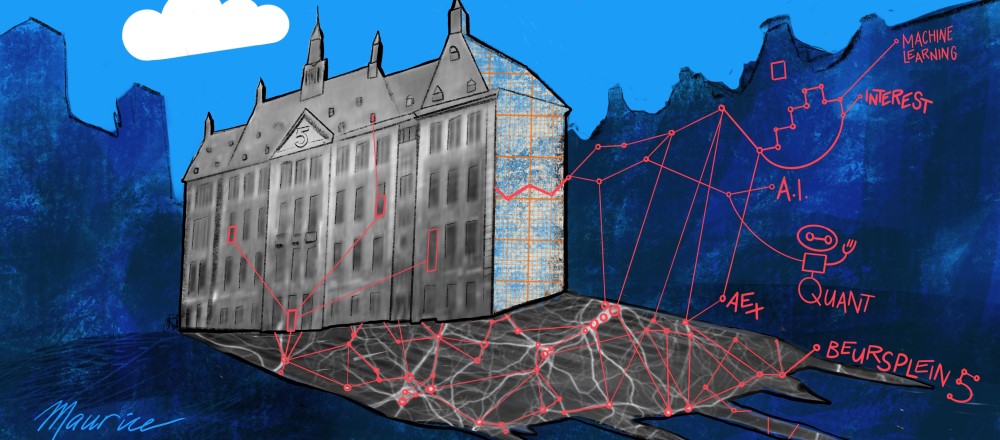
In the series of Beauty and Pity I had finally the guts to make a portrait of my Charlotte. She was away for some time and I started the layers of oil step by step.
1. Why a portrait is more difficult
Beauty and pity is about art being more than design, more than pure aesthetics. Aesthetics distract you from making truly meaningful art works. A few examples:
a) when you made some beautiful first setups your aesthetic feeling creates a fear of ruining the beauty that you have created. Fear makes you afraid to touch the 'nice' part of the painting, and from then on you just work around it, keeping you away from what your feeling tells you needs to be done.
b) when other people tell you what they like in your paintings, they often talk about simple aesthetics they can grasp. When you like these people you get - even at a subconscious level - incentivized to do more of what people like. Taking you away from exploring new things and following your own meaningful path.
The reverse is also true; which is the case with portraits.
 Everyone has an opinion about portraits, and mainly around "does it look like the original". Sure, this is a relevant question for a viewer, but less so from the perspective of a painter.
Everyone has an opinion about portraits, and mainly around "does it look like the original". Sure, this is a relevant question for a viewer, but less so from the perspective of a painter.The painter wants to paint how he sees the person, actually more how he feels the person.
For an artist therefore it is pretty frustrating to have other people say "something wrong with the nose" or "this doesn't really look like her".
In the way like kids need to learn their being does not depend on whether they are liked by all, the artist needs to learn that the success of the painting does not depend on the view of others.
Of course it is nice if the artist reaches a portrait that is truly represents his own feeling, and where others 'feel' it is actually a good 'capture of that person'.
 Another effect is that the artist has to fight the idea of others not seeing the resemblance, needs to resist but is often still aware. This makes that - lets speak for myself - making a portrait takes more energy than an abstract painting.
Another effect is that the artist has to fight the idea of others not seeing the resemblance, needs to resist but is often still aware. This makes that - lets speak for myself - making a portrait takes more energy than an abstract painting.Basically, for an abstract work you accept that 95% of people doesn't appreciate it ;-).
2. How about this painting - is it successful?
Well, it does represent of how I feel Charlotte, and how I see her presence.
Does it look like her? Yes, I am convinced.
Do others agree? Hmmm, not sure...guess we'll see once I publish this post.
It is less relevant though. I would like this painting in my house as it truly enchants me, and represents her more complex presence, more than being beautiful she has a depth, darkness, intriguing roughness, color without color.
Next to that the background adds dimensions of idyll, painful red glow and black tears.
 I am also sure my mentor Frederik Beerbaum has more to read into it. And he might even wonder if I haven't stayed too much on the safe aesthetic side...
I am also sure my mentor Frederik Beerbaum has more to read into it. And he might even wonder if I haven't stayed too much on the safe aesthetic side...3. Making the portrait; steps
(i). It starts with making one color background; this ensure that all nuances in the painting in the final stage appear as a whole, despite layers of different colors that are being added. Especially in oil colors the colors all shine through the layers.
(ii). Adding shades of the shape and face
Using a dark color to set up the full shape, key parts of the body and create a framework for the face.
(iii). add lighter colored layers to bring light and nuance into the painting
The different colors add depth and allow to put more feeling into the expression.
(iv). Add black contours to make it stand out
Like the dress it is nice to add the texture of the black paint, as it gives more feeling to the dress.
And as last step add the black tears that are part of the Beauty and Pity theme.
You can hardly see them on these pictures, only if you look at the enlarged versions.
I also used medium to make the oil paint thinner, especially for the skin where it is nice to see through layers and create depth in the skin.
4. Capturing a painting in a picture
Then the delicate task to capture a painting in a picture. Several elements are relevant:
a) making a good basis picture
b) tweaking the colors and contrast
All the pictures have gone through different rework stages.
Which one do you like most?
And which one would best represent the original?
Guess you will only know when you see the original :-)

No comments:
Post a Comment